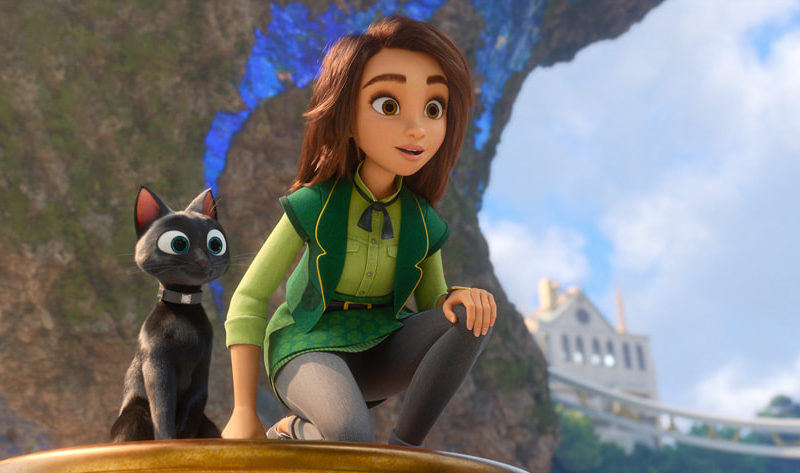Luck (Holmes, 2022)
If you are looking for an animated film with the emotional gravitas of a Pixar heart-plucker and just a touch of old-school Looney Tunes zaniness, you are in Luck.
The film begins as its protagonist, Sam, is released from a girl’s home on her eighteenth birthday. We see a long list of prospective families she has had “weekend visits” with, and it efficiently suggests a backstory of emotional disappointments and pain. Sam befriends a younger girl on the cusp of her first weekend visit, and she agrees to give her a lucky penny for her charm collection if she can find one. The search for it leads her to a magical land of talking cats, dragons, leprechauns, and all nature of mythical creatures. We learn how luck is produced and distributed to the human world.
After the first act, I was a bit uneasy. Sam’s bad luck was a tad overwritten. It was unclear whether she was having a particularly unlucky day or whether she was being positioned as cursed, incapable of receiving a break no matter how hard she tried or how strong her attitude was in the face of adversity. Cursed characters face the same problem as blessed ones — any deterministic world view strips the ability to empathize with the characters in it. One can only stand apart and sympathize.
Fortunately, the film threads a tight needle, building a world where luck is measurable and distributed in unequal amounts but where individual decisions and choices nevertheless matter.
Given that Sam is a young female, I was also worried that the film would follow a sacrificial template, with Sam surrendering her portion of luck in order to save the younger but no more (or less) deserving Hazel. That’s the thing about “luck,” by definition nobody deserves it more.
It seems as though most kids movies these days have to have an oppressed people group metaphor, and that these films must question social hierarchies based on privilege or advantage. Those who live and work in the bad luck domain are carefully presented as neither morally inferior nor (and this is problematic) corrupted in their character by an eternity of bad luck. That may or may not be realistic. As Yeats wrote, “too long a sacrifice makes a stone of the heart.”
Yet there is a winsome quality to the film and its characters. It never settles for letting them be just one thing, and its resolution is surprisingly complex as far as its ethics and possible theology, yet simple enough that a child could grasp the characters’ actions and judge their rightness.
The strongest part of the film by far is its art design, and while some of it looks familiar (a bit like Monsters, Inc. meets Inside Out), there is genuine pleasure in the Rube Goldberg-like operations of the fantasy world. Even here there is a serious lining to its light, airy presentation of the lives of those who are lucky. Those who are born into privilege don’t think of themselves as lucky, they think that a world that shifts under their feet to accommodate them is normal. When Sam joins the mass of humanity that is lucky, she is still not like them, because not having lived her life a certain way she cannot instantly trust that good fortune will always be there to catch her when she walks, talks, or acts without careful consideration.
Luck lingers a bit too long in its second act (but I thought the same of Inside Out). Those familiar with the Pixar narrative structure will intuit that finding the quest object will be the false end that makes the heroine question the quest itself. That being the case, the film lingers on the quest a bit too long after we are ready for it to be over and primed for Sam to have her revelation.
Once Sam has her epiphany, though, its articulation is emotionally powerful, and it connects. These days it is so rare for any film to have genuine pathos, that I’m willing to forgive minor flaws in its execution. When that pathos is combine with whimsy and earnestness rather than self-seriousness, the result is a real winner.

